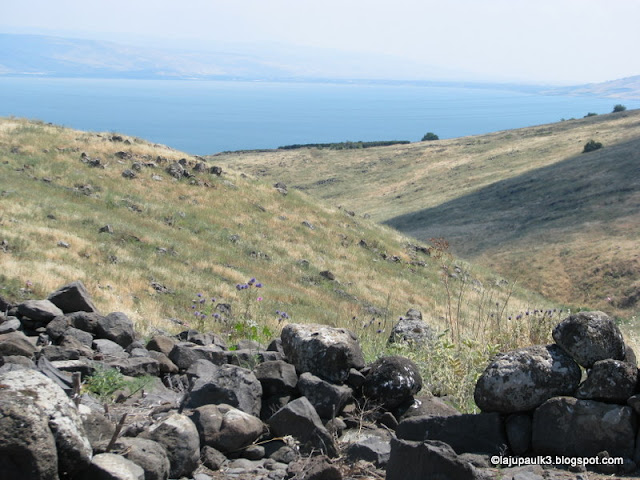Experience the most vibrant,amazing yet unpredictable strip of land on earth.
Monday, October 31, 2011
Sunday, October 30, 2011
CHORAZIN-One of the three cities cursed by Jesus (Mathew 11:21). Today a National Park with many remains from 4th century onwards.
Chorazin (Korazin or Korazim) was one among the three cities known as the 'Evangelical Triangle' (others are Bethsaida and Capernaum) where Jesus spent much of his ministry. The city mentioned twice in the Bible (Mathew 11:21 and Luke 10:13), is more remembered as one of the cities Jesus cursed.
"Woe unto thee, Chorazin! woe unto thee, Bethsaida! for if the mighty works, which were done in you, had been done in Tyre and Sidon, they would have repented long ago in sackcloth and ashes. But I say unto you, It shall be more tolerable for Tyre and Sidon at the day of judgment, than for you" (Mathew 11:20-21). Due to the condemnation of Jesus, some early Medieval writers believed that the Antichrist would be born in Chorazin-records wikipedia.
Located 5 KM north to the 'Sea of Galille' and 900ft above the sea level, Chorazin is now part of a 25 acre Israeli National Park. The site was first excavated by C. Wilson in 1869, followed by several more until 1980s. This under-explored site, mostly due to its isolated location, has some fascinating archaeological remains to offer built in black basalt rocks. An imposing 3rd to 4th century synagogue, a 1600 years old stone seat with an Aramaic inscription that reads "Chair of Moses," ancient olive presses, Jewish ritual baths and remains of several stone sculptures with geometric and floral motifs are a few of them. More details are appended with photographs below.
Most of the remains you see today are from 4th century onwards. A quest for the synagogue at the time of Jesus has been extensively sought, but not discovered so far. In 1926, a first century synagogue was reported 200 M west of the present ruins, but never found by later excavators. However, there is a high probability that the first century synagogue is located very near these ruins. We do know that Chorazin was established in the first century from ancient records, but are yet to find its traces. Chorazin is also mentioned in Jewish Talmud.
For us the most difficult part was to walk the 2 KM stretch from the Korazim junction to the park and return, under the scorching sun of Israel. But, it was an experience to cherish.
Located 5 KM north to the 'Sea of Galille' and 900ft above the sea level, Chorazin is now part of a 25 acre Israeli National Park. The site was first excavated by C. Wilson in 1869, followed by several more until 1980s. This under-explored site, mostly due to its isolated location, has some fascinating archaeological remains to offer built in black basalt rocks. An imposing 3rd to 4th century synagogue, a 1600 years old stone seat with an Aramaic inscription that reads "Chair of Moses," ancient olive presses, Jewish ritual baths and remains of several stone sculptures with geometric and floral motifs are a few of them. More details are appended with photographs below.
Most of the remains you see today are from 4th century onwards. A quest for the synagogue at the time of Jesus has been extensively sought, but not discovered so far. In 1926, a first century synagogue was reported 200 M west of the present ruins, but never found by later excavators. However, there is a high probability that the first century synagogue is located very near these ruins. We do know that Chorazin was established in the first century from ancient records, but are yet to find its traces. Chorazin is also mentioned in Jewish Talmud.
For us the most difficult part was to walk the 2 KM stretch from the Korazim junction to the park and return, under the scorching sun of Israel. But, it was an experience to cherish.
Saturday, October 29, 2011
The ancient synagogue of Chorazin. Apparently built in late 3rd or early 4th century AD, the synagogue was destroyed in an earthquake of late 4th century. It was rebuilt in 5th century and lasted until 8th century. The synagogue is more famous for its association with Jesus, though till date no structure discovered from Chorazin has been undisputedly dated from 1st century.
Main entrance and the staircase to the Chorazin Synagogue (4th Century AD). There were three doors to enter the synagogue, the reconstructed structure has only a side door and a larger central door. The doors face south, i.e. towards Jerusalem. The reconstructed gable displayed on the floor (4P and 5P) was part of the decorated top of the original door.
Subscribe to:
Comments (Atom)




















































